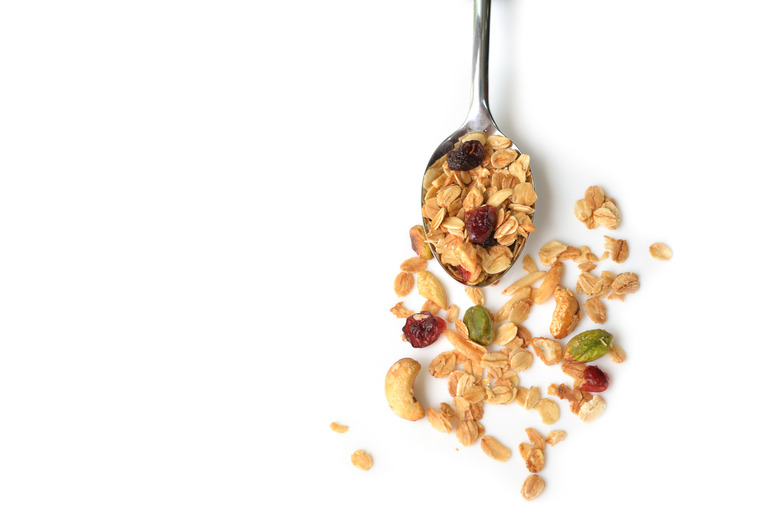Gluten-Free Granola Has More Fat Than A Spoonful Of Butter
A spoonful of butter has 12 grams of fat. A serving of Julie's Real gluten-free granola has 19 grams. So we're not making this up: Pouring granola all over your breakfast in the morning is absolutely loading your body with extra fats.
But that might not be such a bad thing; it all depends on context. The science-backed truth is that you need healthy fats — such as the ones in the all-natural, grain-less ingredients of gluten-free granolas — to maintain a balanced diet and a healthy weight.
The problem lies in our interpretation of how and why we should eat gluten-free granola. Two words that are misinterpreted more often than not:
- Gluten-free
- Granola
When you put them together, an absolute mess of misunderstanding ensues. So let's get things straight, piece by piece.
First, let's talk gluten-free.
Gluten-free refers to a food that omits wheat and other forms of gluten. That's it.
Just because something is labeled "gluten-free" doesn't make it healthy, just as something labeled "peanut-free" isn't necessarily healthy. The label only refers to omitting a specific ingredient. Foods that are healthful only in moderation, such as oil, butter, and sugar, are all gluten-free.
Foods that are almost always wise to avoid entirely, such as chemical preservatives and artificial sweeteners, are also gluten-free.
What makes gluten-free granola so rare and special? Well, most cereals and granolas are made with gluten, since granola is often grain-based. They're usually built upon oats or some type of roasted grain. While there are oats out there that are gluten-free, most gluten-free granola often defaults to "grain free."
If not grains, what does one put in granola? From a health food company's perspective, it's simple: fats. Nuts, seeds, coconut flakes, and other sources of healthy fat are used as the primary ingredients in many gluten-free granola brands. Hence, the high fat content.
The second misunderstanding: granola.
Granola often gets misconstrued as cereal, maybe because it's sold in a similar style of packaging and displayed in the same aisle. However, granola and cereal are not interchangeable.
An entire bowlful of granola is going to get you heaps more fat, calories, and probably sugar than a bowlful of cereal. It's just a more calorie-dense food. It's made of fats instead of grains. It's kind of like oatmeal, a creamy grain, and peanut butter, a creamy fat.
Are oatmeal and peanut butter interchangeable? Obviously not. Yet we do that exact thing with granola — especially if it's gluten free.
How should we be using gluten-free granola?
If you enjoy gluten-free granola, by all means you should eat it. Just be mindful of what it is you're eating when you decide on a portion size.
I like to sprinkle granola over a bowl of cereal or oatmeal. I also enjoy adding it as a crunchy topping for a smoothie or yogurt. By adding just a sprinkle, I'm giving my body the healthy fats it needs in a dose that's far more appropriate — and that makes me feel much less tired and weighed down by breakfast.
